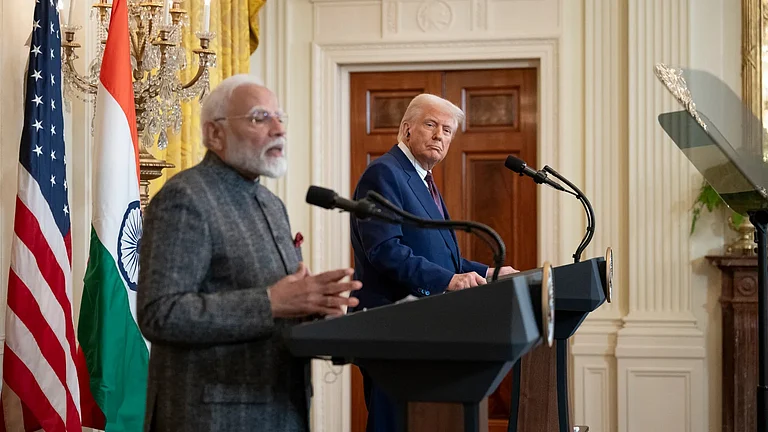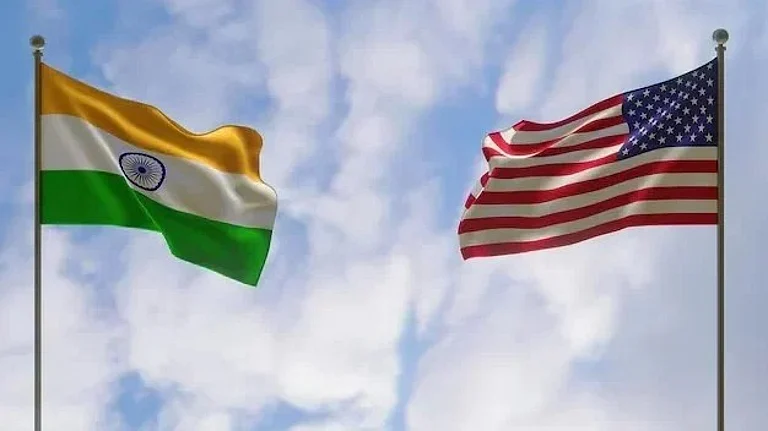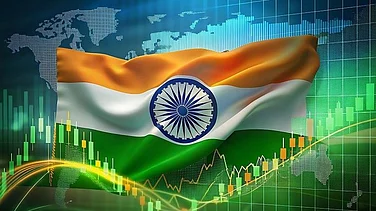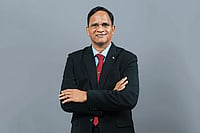
Trump’s Bluster vs Modi’s Silence: Trump has hurled tariffs, threats and Pakistan overtures to provoke India; Modi has answered with deliberate silence that looks calculated, not submissive.
The Psychology of Silence: Gandhi practised it, Harvard explains it. Silence unsettles bullies by denying them the confrontation they crave.
Independence Day Speech: Expected to hit back, Modi instead offered a calm plan for growth, social justice and stronger institutions.
Economic Endorsement: India’s growing economic strength was endorsed on August 14, Pakistan’s Independence Day, when S&P gave its first sovereign upgrade in 18 years.
Noise vs Poise: America under Trump has relied on spectacle; India projects confidence through composure. Silence backed by strength is not weakness but superiority.
President Trump has spent the past few months bad-mouthing India and sandpapering its raw nerve with his Pakistan overtures. Given the prevailing Modi archetype—a fiercely nationalist leader with a politically lucrative strongman image—Trump, as indeed the world, might have expected scathing return fire. Instead, the Prime Minister and his ministers have maintained a stoic silence, which increasingly appears strategic rather than supplicatory: India is weaponising silence, responding, if at all, only with affirmations of the depth and scope of its ties with the world’s oldest democracy, built over decades of diplomacy and grounded in time-tested mutual interests—historical, cultural, geopolitical and economic.
When applied with thought, as India appears to be doing, silence can be deafeningly effective, particularly when the adversary is a bully. Mahatma Gandhi wielded it to deadly effect against the marauding British colonisers; now his fellow Gujarati, Modi, seems to be doing the same against a rampant Trump, many decades later, in a changed world where India has struck a trade deal with its former subjugator on its own terms. Sustained, silence turns noise into parody in the theatre of bluster.
There is science underpinning this theory. Harvard’s Program on Negotiation has long described silence as a disciplined tool, not a void. Well-timed silence shifts control of the frame, compels the other side to fill the space, and often yields disclosure or concessions.
Trump’s tirade, of course, has been anything but scientific. From railing about tariffs and threatening “consequences” for India’s continued oil trade with Russia, to parading Pakistan as a supposed ally against terrorism, his strategy has been to needle and provoke. The White House podium has served as a stage for lieutenants to reprise the same refrain, a chorus of threats and warnings choreographed to goad India into a misstep.
The intent is transparent. Trump thrives on provocation, forever seeking to bait his adversaries into his preferred arena: a loud, personal contest where he dictates the script, the sound, and the spectacle. India, however, has declined to audition. Its silence has been maddening for Washington precisely because it deprives Trump of what he needs most — the theatre of confrontation, the manufactured drama so essential to sustaining his MAGA persona.
Independence Day Surprise
The barrage of tariffs and taunts from Washington had led many to believe that Modi would use his Independence Day address for a counter-punch. Instead, the country—and the world—heard a composed dissertation of India’s aspirations: a blueprint to accelerate growth, entrench social justice, and fortify institutions.
In the calm cadences of Modi’s address there could be no room for Trump’s noise. There wasn’t a sentence that betrayed insecurity or indignation. What Modi offered was something more unnerving for his critics abroad: a display of confidence. He reminded the world that India is poised to become the world’s third-largest economy within this decade and that it is already the fastest-growing major economy standing on rock-solid fundamentals, a fact fortuitously endorsed by S&P on August 14, Pakistan’s Independence Day, with the first sovereign credit upgrade of the country in 18 years.
S&P’s upgrade of India to BBB—investment grade—affirms that the country’s economic resilience and fiscal consolidation have not gone unnoticed. Growth averaging close to 9% in the years after the pandemic, credible inflation management, and robust corporate and financial balance sheets have allowed India to buck a recessionary global trend and emerge, in S&P’s own words, as “one of the few beacons of hope.” Dead economy? Seriously, Mr Trump?
The Don’s tariffs and threats were mentioned almost in passing in the rating note: a “limited impact” thanks to India’s large domestic consumption base. That single phrase carried more weight than a dozen White House press briefings. It underscored the asymmetry of the contest. America may wield tariffs, but India today wields scale—an economy too large, too dynamic, and too integrated to be easily cowed.
Noise versus Poise
This is the contrast that matters. America’s policy under Trump has been defined by volume: tariffs announced with fanfare, threats issued with flourish, Pakistan dusted off as a prop. India’s response has been defined by composure: stressing continuity in ties, reiterating commitment to democracy, foregrounding its economic march.
It is not that India lacks the means to retaliate. Tariffs can be matched, alignments can be recalibrated, alliances can be explored. But strategy sometimes demands patience more than punishment. Silence here is not the absence of action; it is the avoidance of distraction.
Of course, silence is not without peril. Left unaccompanied, it can be mistaken for weakness. Gandhi’s silence worked because it was amplified by mass movements. Modi’s silence will work only if backed by visible preparedness—diversified trade, energy security, military readiness, and credible partnerships. The message must be that India is not rattled, not because it cannot respond, but because it is choosing not to play on Trump’s terms.
The restraint of Independence Day must therefore be followed by tangible actions: progress on reforms, clarity on fiscal anchors, a redoubled effort at coalition-building in Asia and beyond. The real reply to Trump’s provocation is not in words but in India’s continued ascent.
For now, India has shifted the frame. Trump’s bluster looks increasingly like noise in search of an audience, while Modi’s calmness projects an India confident of its path. Silence, wielded well, is not submission—it is superiority.
Trump may thunder, his lieutenants may echo, and Pakistan may be summoned from the wings for comic relief. But India, by holding its silence and showing its strength, has made the louder statement: that the future belongs not to those who shout the loudest, but to those who build with steadiness.
In a world crowded with noise, India has chosen poise. And in the end, that may prove to be the most powerful sound of all.
Disclaimer: The views expressed in this column are my own and do not necessarily reflect the official policy or position of Outlook Business.

































